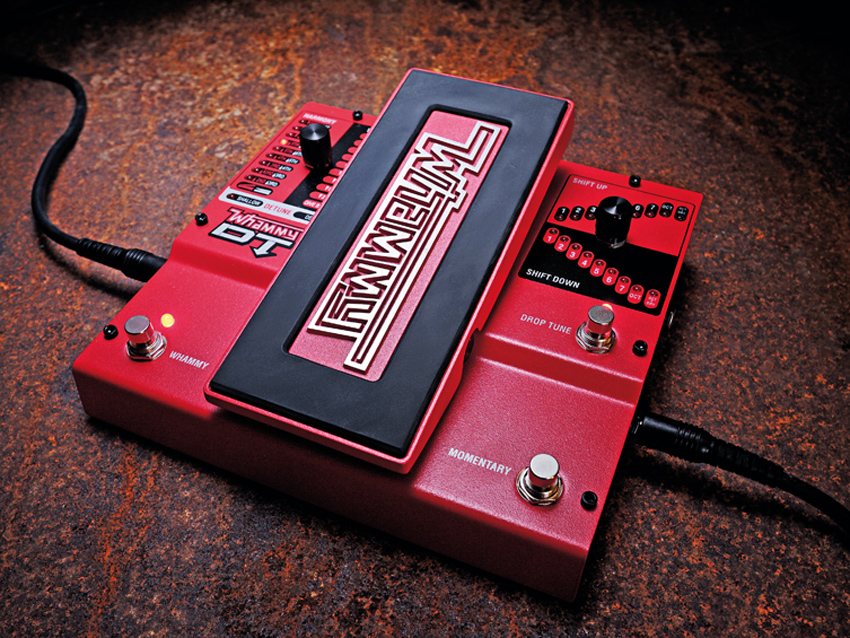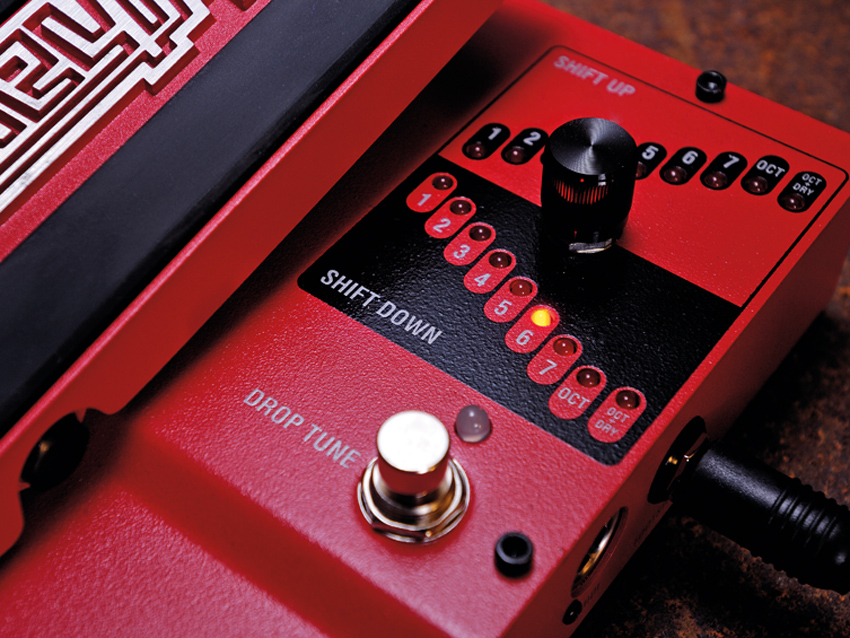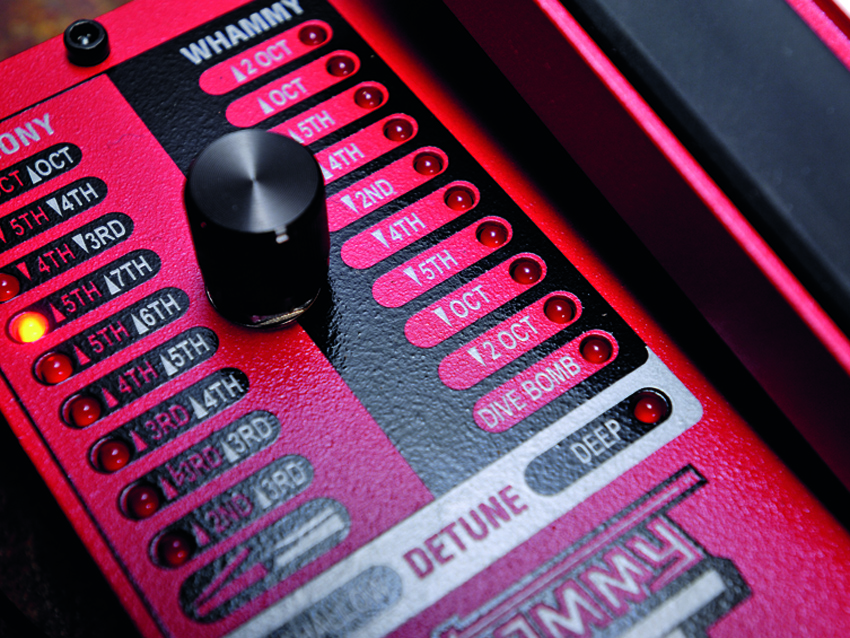MusicRadar Verdict
The best Whammy pedal so far? We think so. If you've ever fancied giving one a go, the time is now.
Pros
- +
The drop tune effects. Ease of use. Authenticity of the effects.
Cons
- -
The occasional digital fluttering
MusicRadar's got your back

DigiTech Whammy DT

DigiTech Whammy DT

DigiTech Whammy DT

DigiTech Whammy DT
First released over two decades ago, the DigiTech Whammy has undergone a number of evolutionary spurts resulting in improvements in both performance and the choice of effects.
Tom Morello during Rage's Killing In The Name, Vai's Touching Tongues and David Gilmour's lines in Floyd's Marooned are just three very different yet equally musical uses of the Whammy and prove that, when used sensitively and sparingly, it can provide effective and ear-hooking effects.
"The main advance with the Whammy DT is the drop tuning function."
The pedal provides a number of intervals to which a note can be pitch-shifted by the player using the onboard treadle. Turn the effect on via the dedicated switch and choose between the harmony, whammy or detune selections.
The first will bend a note either up to or down from another shifted note while keeping the original note in the mix. The second will take the note you're playing and bend it up or down to a maximum of two complete octaves; the latter also provides a chorus of two intensity levels.
However, the main advance with the Whammy DT is the drop tuning function. It shifts your tuning either up or down by up to seven semitones, plus a full octave and a dry/octave mix option. The drop tune switch gives access to these effects and you can even mix them in with the harmony and whammy menus to give some very weird sounds indeed.
What's more, the DT also features a momentary switch that turns the drop tune setting in and out instantaneously. This allows you, for example, to go from playing a riff in E to D without detuning the guitar, removing a capo or investing in a seven-string guitar.
Additional features include a MIDI in port that allows for remote control of both the effects and the position of the treadle, plus input for the optional DigiTech FS3X footswitch for selecting the effects. There are also two bypass modes, true and DSP bypass, with the later smoothing the operation of the momentary switch - and you can even recalibrate the treadle if necessary.
Sounds
All of the harmony and whammy effects provide a smooth glissando between intervals, and there isn't, nor has there ever been, any ugly stepping or glitching to contend with. Although the Whammy does work with chords, it's with single notes that the effects are at their most strident.
For sheer ferocity, using the octave up options provides some truly searing notes and the treadle is so smooth that emulating Tom Morello is just a question of timing.
The dive bomb feature, which was first introduced to the Whammy in 2000, mimics the unbridled joy of abusing a double-locking vibrato system without the need to drill holes into your pride and joy, and the drop tune section can genuinely operate as a virtual capo, albeit restricted to the interval you've set the pedal to.
If you plan to use the momentary switch, we would suggest setting the pedal to DSP bypass, as there is an infinitesimal yet discernible hiccup between the original and shifted signal when used with true bypass.
While we're on the subject of more technical issues, the level of unappealing digital fluttering, which is especially apparent when using full clean chords with the harmony effects, is somewhat reduced from previous Whammys: good news.
The Whammy DT is a unique pedal, and if you fancy joining the ranks of some of the guitar's greatest and most innovative players then this is the version to add to your pedalboard. A lower spec version - the Whammy (£219) - is available, but the drop tuning options afforded by the DT should not be missed.
Easy to use and with a robust construction, it can provide a powerful addition to your arsenal whether you play metal, country or styles in between: how many pedals can you say that about?
Simon Bradley is a guitar and especially rock guitar expert who worked for Guitarist magazine and has in the past contributed to world-leading music and guitar titles like MusicRadar (obviously), Guitarist, Guitar World and Louder. What he doesn't know about Brian May's playing and, especially, the Red Special, isn't worth knowing.
Brace yourself: Bryan Adams didn’t buy his first real six-string in a five and dime
“Nobody listens to one genre. I literally don’t know anybody who listens to one genre. You can be a fan of so many different artists at once”: Laufey on what Gen Z can teach the rest of us about how to appreciate music
Bon Iver - ranked: from Sable, Fable to For Emma, Forever Ago









